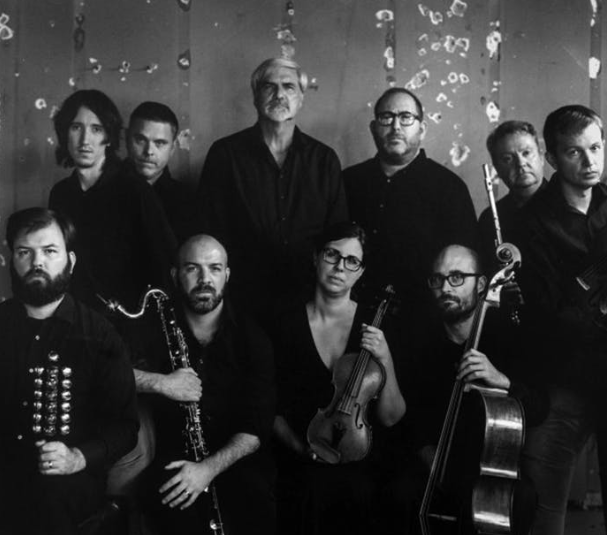The Collective presents No Exit New Music Ensemble in Review
The Collective: Douglas Knehans, founder
No Exit New Music Ensemble, Timothy Beyer, director
Composers: Timothy Beyer, Cindy Cox, Amelia Kaplan, Douglas Knehans, Constantine Koukias, Pamela Madsen, Spiros Mazis, Mathew Rosenblum, Edward Smaldone, Jack Vees, and Agata Zubel
Performers: Jenny Lin, piano, special guest; Sean Gabriel, flute; Gunnar Owen Hirthe, clarinet/bass clarinet; Nicholas Underhill, piano; Luke Rinderknecht, percussion; Cara Tweed, violin; James Rhodes, viola; Nicholas Diodore, cello; James Praznik, associate director/electronics.
Weill Recital Hall at Carnegie Hall, New York, NY
May 12, 2022
The Collective continued its mission to represent the newest voices in contemporary avant-garde music by presenting Cleveland’s preeminent ensemble, No Exit, founded thirteen years ago by Timothy Beyer, one of the evening’s composers. I didn’t hear anything truly “avant,” but these composers sure know how to use their computers, samplers, and other electronics, added to more traditional instruments, many of which are played with extended techniques.
With the name No Exit, a translation of the title of Sartre’s play Huis clos, in which three characters are dead and condemned to spend eternity locked in a room, I wondered what the message of this ensemble would be. Not to worry, no one was locked in Weill Recital Hall, and no one left either.
The abundant program contained five New York premieres, four world premieres, and two United States premieres. Even from a knowledgeable reviewer’s standpoint, such concerts are exhausting: no scores to study, no precedent, etc. The small audience was composed primarily of the composers, their family/friends, and perhaps a few others. Just who is being addressed by such music was my primary concern, though there were many moments that shone. I decided it was best to follow the advice of one of my former professors: Drop your preconceptions of what music “is” and where it should “go,” just let yourself float in the sound landscape. Doing this revealed a program of great variety, no two of these composers resemble each other. All have immensely personal statements to make with a huge range of techniques.
For me, the absolute standout of the evening was The Collective’s founder’s piece, Mist Waves, by Douglas Knehans, a poignant, succinct modern passacaglia for violin and piano. No tricks, just beautiful soulful material, played with heart by Cara Tweed and Nicholas Underhill.
Other excellent works were: Sonic Entanglement by Spiros Mazis, performed by the supernaturally talented Jenny Lin, with numerous spectral electronic enhancements. Unnatural Tendencies, by Amelia Kaplan, for solo piano, a jittery rumination on the pandemic, performed superbly by Nicholas Underhill. Byzantine Images, by Constantine Koukias, the oldest work on the program (1985), for solo flute with digital delay—this allows the traditional single-line flute to become polyphonic with itself, played hauntingly by Sean Gabriel. The concluding work Two Harmonies, by Mathew Roseblum, for viola, percussion, and piano/sampler, which utilized two different complex microtonal systems (division of the octave into more than the twelve half-steps of the traditional ‘scale’), had great atmosphere, and also did not overstay its welcome.
I have never heard a single bass drum played on a concert before, so I was highly intrigued by MONO-DRUM, by Agnes Zubel, which was given theatrical flair by Luke Rinderknecht, who was charged with emptying a brown paper bag of brightly colored children’s play balls onto the surface of the drum. The vibrations caused them one by one to ‘jump down’ off the drum onto the stage floor. A huge variety of sounds was invoked with all manner of techniques: mallet, ‘wrong’ end of the mallet, hands on drum surface, hands on drum body, balls swishing back and forth on drum surface…
Lines of Desire, by Jack Vees, for bass clarinet, viola, and cello, had an intriguing premise: the representation of those paths we all see in parks where people have chosen a shortcut and cut a rather enduring swath through the grass instead of following the walkway. The challenge of writing for three instruments in almost the same register was expertly handled, the ensemble’s pulse was perfect (Gunnar Owen Hirthe, James Rhodes, Nicholas Diodore).
For me, the least successful works were: Amputate III, by Timothy Beyer, for piano and electronics, with its graphic use of the recorded and distorted sounds of saws going through bones. Despite Ms. Lin’s expertise, the electronics rendered the piece nearly deafening. Owl’s Breath, by Pamela Madsen, originally scored for bass clarinet and electronics, was performed without the electronics, Mr. Hirthe’s playing is always superlative, but I wasn’t getting birds out of the work, as its program note indicated.
I didn’t mean to neglect the two opening works: Duke Redux, by Edward Smaldone, for flute, bass clarinet, cello, and vibraphone, an extension of Ellington’s Come Sunday, and a reworking of a flute and piano piece. Blackwork, Scarletwork, by Cindy Cox, for violin, viola, and cello, claimed to be inspired by Renaissance lacework in Spain.
Perhaps I just needed a little time to accustom myself to this language of music. Certainly there does seem to be an aversion to sustained melodic writing. I wonder if that is a trend or a blip. The advent of electronics, while hardly new, does give composers opportunities their forebears never imagined. And that’s what all the excellence on stage Thursday had in common: a surfeit of imagination, the most precious resource.

